We had wonderful luck over winter 2012, with both of our hives surviving and strong as the winter weather thawed into spring. We decided to expand our apiary, adding two new hives in the spring and one later in the summer. How do you get new queens to establish new hives? By mail, of course! Here is a shipping container especially for bees, sent via the U.S. postal service (yes it is legal to mail properly labeled bees).
Backtracking just a little bit, over the winter Roman and I spent our ‘downtime’ from the bees, when management was unnecessary, to study and read more about bees; their biology, their habits and beekeeping theories. In the spring we took the continuation of our original class at the University of Minnesota on beekeeping. It was a wonderful class and included some guest speakers, including one researcher who specializes in bee sleep. Do bees sleep? Yes, they do, and it seems they also dream!
Here is a peek inside the bee mailer. The blue sponge holds water and the little black tubes are filled with a sugar candy – a mobile food source the bees can chew on and use as a temporary food source. The two cages on the right hand side each contain a queen bee, the loose bees are attendant workers who make sure the queens get food and water while traveling. The bees are ok like this for the few days of transport before they get installed into new hives.
The process we used for creating new hives this year is called splitting – it serves the dual purpose of expanding the number of colonies as well as keeping established hives from swarming. Swarming is a natural occurrence and the way honeybees would reproduce in the wild. When bees reach a certain level of population the queen will leave with a large number of workers and the old hive would raise a new queen. Splitting, where we remove frames of brood and young worker bees, relieves the population pressure of the original hive and creates a second without inducing a swarm.
In this picture you can see the queen in her cage, inserted between two frames in the newly established colony. She needs to be kept in the cage for a few days to allow the now queenless new hive a chance to get to know her and accept her without risk of her getting attacked. Young workers convert quickly and begin bringing her food and water which they can feed through the cage mesh.
Here is a view from the top of the newly established hive – the center five frames were pulled from the older hives, the queen cage is there in the middle upper-left corner, and the large bag is full of a mixed sugar-water syrup that the bees can access. The only time we usually offer supplementary feed to the bees is during this time when they are just getting established and do not have enough of a worker force yet to feed the new colony via foraging. There is some honey available in the old frames, but the bit of extra food helps in case it is needed.
Our dog, Marrok, has learned what a safe distance from the hives is. He picked up on that really quickly and beds down nearby to watch us while we work.
Here are Roman and I working on the newly established hive that was shown from above in the previous pictures. To the right is a second year hive which already has a few ‘supers’ on it (the smaller boxes on top which are used just for excess honey production).

 August 1st, 2013
August 1st, 2013  Foxfeather Ženková
Foxfeather Ženková 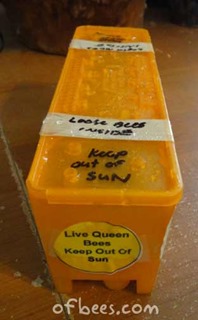
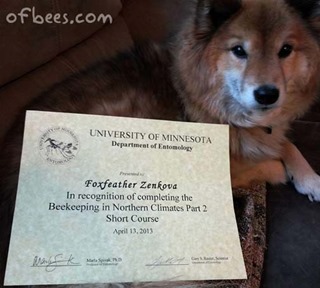
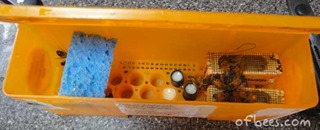
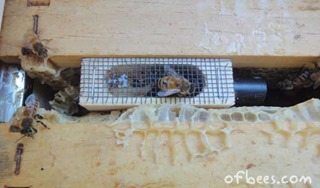
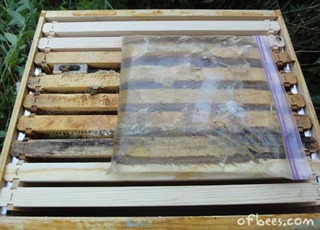
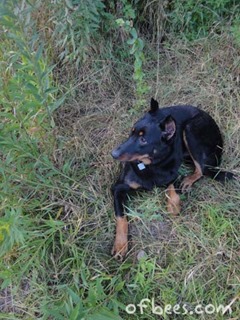
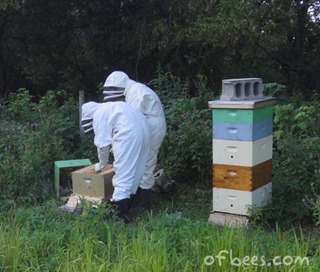
 Posted in
Posted in 
